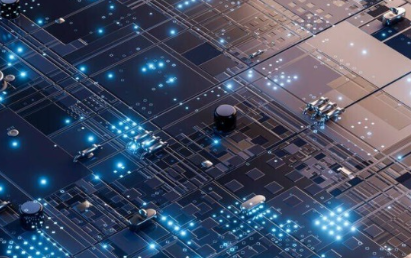- Ameya360 Component Supply Platform >
- Trade news >
- EMC Components : Guardians of Electronic Devices
EMC Components : Guardians of Electronic Devices
Electromagnetic interference (EMI) is a pervasive force in our modern world. It emanates from various sources such as radio waves, power lines, and even the devices we use daily. EMI can disrupt the operation of electronic devices, causing malfunctions, data corruption, or complete failure. This interference not only affects the device itself but can also radiate outward, potentially interfering with other nearby electronic systems.

Electromagnetic compatibility EMC components are crucial for addressing electromagnetic interference emissions and susceptibility issues. The correct selection and use of these components are prerequisites for electromagnetic compatibility design.
Therefore, we must have a deep understanding of these components in order to design electronic and electrical products that meet standard requirements and offer the best cost-effectiveness. Each electronic component has its own characteristics, so this article will discuss some common electronic components and circuit design techniques to reduce or suppress electromagnetic compatibility issues.
There are two basic groups of electronic components: leaded and lead-free components. Leaded components have parasitic effects, especially at high frequencies. The leads form a small inductance, approximately 1nH/mm/lead. The ends of the leads also produce a small capacitance effect, around 4pF. Therefore, the length of the leads should be kept as short as possible. Compared to leaded components, lead-free surface-mount components have smaller parasitic effects. Typical values are: 0.5nH parasitic inductance and around 0.3pF terminal capacitance.
EMC components are specialized electronic parts designed to mitigate the effects of electromagnetic interference. They act as shields, filters, and absorbers, safeguarding sensitive electronic circuits from unwanted electromagnetic disturbances. These components come in various forms, each serving a unique purpose in the quest for electromagnetic compatibility.
CapacitorsCapacitors are indispensable elements in EMC design, serving as robust tools for both filtering and bypassing unwanted noise and signals.
At their core, capacitors store and release electrical energy, but in the realm of EMC, they serve a dual purpose. Firstly, capacitors act as filters, blocking high-frequency noise and interference from entering sensitive circuits. By strategically placing capacitors in signal paths or power lines, designers can effectively attenuate EMI, preserving signal integrity and device performance.
Secondly, capacitors act as bypass components, providing a low-impedance path for high-frequency noise to dissipate harmlessly to ground. This prevents noise from propagating through the circuit and interfering with critical operations.
Ferrite Beads and ChokesFerrite beads and chokes are passive components commonly used to suppress high-frequency noise in electronic circuits. By introducing impedance to the flow of high-frequency signals, these components effectively filter out electromagnetic interference. They are often found in power lines, signal cables, and printed circuit boards, where they help maintain signal integrity and prevent interference from disrupting sensitive electronic components.
EMI FiltersEMI filters are active or passive devices that suppress conducted electromagnetic interference by attenuating noise on power lines and signal cables. These filters typically employ a combination of capacitors, inductors, and resistors to shunt high-frequency noise to ground, ensuring that only clean power reaches the electronic device. EMI filters are crucial in applications where strict electromagnetic compatibility standards must be met, such as medical devices, automotive electronics, and telecommunications equipment.
InductorsInductors, vital EMC components, establish a connection between magnetic and electric fields, offering sensitivity crucial for addressing electromagnetic interference (EMI). These components, akin to capacitors, tackle various EMC challenges effectively. There are two fundamental types: open-loop and closed-loop, distinguished by their magnetic field paths. Open-loop inductors, with magnetic fields traversing air, can induce radiation and EMI concerns. Axial winding is preferable over rod or coil designs to confine the magnetic field within the core.
Conversely, closed-loop inductors enclose the magnetic field entirely within a magnetic core, rendering them ideal for circuit design albeit pricier. Ferrite-core inductors are particularly suited for EMC applications due to their capacity to operate at high frequencies, ensuring efficient EMI suppression. In EMC endeavors, ferrite beads and clips emerge as specialized inductor types, catering to unique interference challenges.
Shielding MaterialsShielding materials, such as conductive foils, tapes, and coatings, create a barrier between sensitive electronic components and external electromagnetic fields. They prevent electromagnetic interference from penetrating or escaping from electronic enclosures, thereby minimizing the risk of interference-induced malfunctions. Shielding materials are widely used in consumer electronics, industrial machinery, and aerospace systems to ensure reliable operation in electromagnetic environments.
Surge SuppressorsSurge suppressors, also known as transient voltage suppressors (TVS), protect electronic circuits from voltage spikes and transient surges caused by lightning strikes, electrostatic discharge (ESD), or switching events. These components rapidly divert excess energy away from sensitive electronic components, preventing damage and ensuring the longevity of electronic devices. Surge suppressors find applications in power supplies, data communication systems, and automotive electronics, where robust protection against transient events is essential.
ConclusionThe role of EMC components in ensuring the reliability and performance of electronic devices cannot be understated. From ferrite beads and EMI filters to shielding materials and surge suppressors, these unsung heroes silently guard our electronic world against the invisible forces of electromagnetic interference. As technology marches forward, the importance of EMC components will only continue to grow, shaping the future of electronics in an interconnected world.
Online messageinquiry
- Week of hot material
- Material in short supply seckilling
| model | brand | Quote |
|---|---|---|
| RB751G-40T2R | ROHM Semiconductor | |
| MC33074DR2G | onsemi | |
| TL431ACLPR | Texas Instruments | |
| BD71847AMWV-E2 | ROHM Semiconductor | |
| CDZVT2R20B | ROHM Semiconductor |
| model | brand | To snap up |
|---|---|---|
| BP3621 | ROHM Semiconductor | |
| TPS63050YFFR | Texas Instruments | |
| IPZ40N04S5L4R8ATMA1 | Infineon Technologies | |
| ESR03EZPJ151 | ROHM Semiconductor | |
| BU33JA2MNVX-CTL | ROHM Semiconductor | |
| STM32F429IGT6 | STMicroelectronics |
- Week of ranking
- Month ranking
Qr code of ameya360 official account
Identify TWO-DIMENSIONAL code, you can pay attention to


Please enter the verification code in the image below:






















